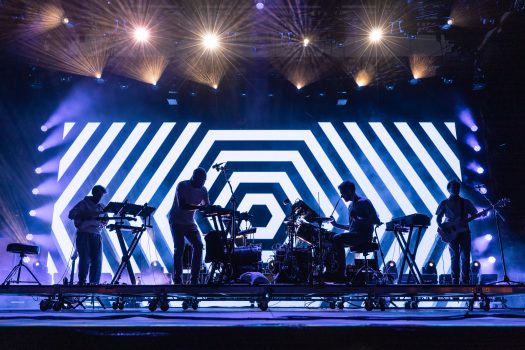In both subliminal and more overt ways, video game soundtracks are integral to the gaming experience. The 8-bit Super Mario Bros theme and the Pac-Man theme are universally recognized sounds. However, these are two of the simplest examples from two old-timers. Video games often usefully produced tracks, especially dance music, to maximize their players’ enjoyment. This trend of using actual soundtracks is getting increasingly popular in the modern gaming industry.
Let’s take a look at the history of music in video games, the space for dance music in video games, as well as some famous examples from some of the biggest games and music producers out there.
The history of music in video games
Earlier video games would use a method called “chiptune” to incorporate music into games. When video games first gained popularity in the late 1970s, music came in cassettes and phonograph records. Unfortunately, this hardware was prone to break under heavy use, making it an unreliable source for music in arcade machine games. Thus chiptune was born: coding a specific computer chip to produce analog sound waves through the arcade machine speakers whenever the machine was in use. Because of the limits of computer chips, the tunes would often be a straightforward and short loop. An early example of this would be the opening chiptune of Gun Fight (1975).
Because of the limits of chiptune, the music was used sparingly: usually as an opening theme or between levels. The first game to have continuous background music throughout the player’s experience was Space Invaders (1978).
Beginning in 1980, some arcade games began taking steps toward digitized or sampled sounds. Technology like digital-to-analog converters (DAC) and FM sound chips was introduced to produce sampled tones or manipulate the music to have different sound characteristics, allowing some exploration outside of the simple loops of chiptune. For example, in the 1983 arcade game, Gyruss used five sound chips and a DAC to create an electronic version of Bach’s Toccata and Fugue in D minor.
At the same time, digital FM synth boards were being used to make strides in computer game music, which allowed for even more complex background music in those games.
Dance music in video games today
Technology has come a long way, and video games are now played in far more complex systems than the old 16-bit arcade game machines or the first personal computers. The innovations to the modern video gaming consoles, like the PlayStation, the Xbox, and the gaming PC, allow music to be commodified in video games with hardly any limits. In addition, video games either use their original score or popular music, giving artists an additional source of revenue or exposure.
Dance music is one of the most popular genres used in video games––for many reasons: the upbeat, synth sound that trademarks dance music is very fitting and often enhances the experience of fast-paced, action games; dance music is usually more beat-focused rather than lyric-heavy, so players will not get distracted from the main objective of the video game; and much more!
Examples of Dance Music in Video Games

Fortnite
One of the most popular games of today goes beyond just background music. The iconic ‘dance emotes’ of Fortnite all have a unique sound clip that plays when the player uses them. In addition, the radio plays full tracks when players enter the virtual cars in the battle arena.
Grand Theft Auto V
The second best-selling video game of all time has a very realistic network of radio stations that play its expansive soundtrack when players drive a vehicle.
Wipeout
An electronic dance music soundtrack is only fitting for a futuristic game about racing spaceships. Wipeout is only one famous example of futuristic video games that use electronic background music to sell the time-traveling experience!




